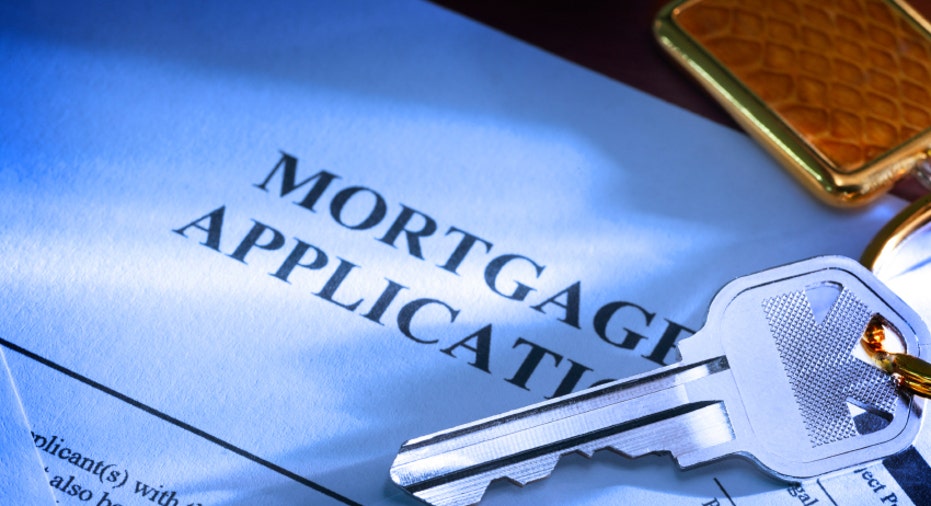Four Mortgages That Require Little Money Down

Homebuyers with little money for a down payment are finding more home loans available for a low down payment or even no down payment.
These mortgages are becoming more commonplace even as the country recovers from a housing bust made worse by the popularity of low down-payment mortgages during the housing boom.
The Federal Housing Administration insures loans with small down payments. And private mortgage insurers have lowered their down payment requirements.
It's even possible to get a mortgage today with no money down. The nation's biggest credit union offers "zero-down" mortgages. The Veterans Administration and the Department of Agriculture guarantee home loans with no down payments.
Following are a few options for borrowers seeking low down-payment and zero down-payment home mortgages: No down payment: VA loan
Veterans Affairs (formerly the Veterans Administration) guarantees no-down purchase mortgages for qualified veterans. Private lenders originate VA loans, which the VA guarantees. There is no mortgage insurance. The borrower pays a funding fee, which can be rolled into the loan amount.
The VA funding fee varies, depending on whether the veteran served in the regular military or in the Reserves or National Guard, and whether it's the veteran's first VA loan or a subsequent one. The funding fee can be as low as 2.15% or as high as 3.3%.
No down payment: Navy Federal
Navy Federal Credit Union, the nation's largest in assets and membership, offers 100% financing to qualified members for buying primary homes. Credit union eligibility is restricted to members of the military, some civilian employees of the military and U.S. Department of Defense, and family members.
Navy Federal resumed zero-down financing in 2010 after a hiatus of a couple of years. Barbara Sheehan, Navy Federal's assistant vice president for mortgage products, says when members of the military are transferred, they sometimes own houses whose values have fallen, wiping out equity.
"Some people had to take losses to sell their houses, so to have to start over and save the money again for a down payment is really difficult," she says.
The credit union's zero-down program is similar to the VA's. One difference is cost: Navy Federal's funding fee of 1.75% is less than the VA's funding fees.
No down payment: Department of Agriculture
The Department of Agriculture's Rural Development mortgage guarantee program is so popular that it has been known to run out of money before the end of the fiscal year.
"That's the cat's meow, my favorite loan program," says Jeff Tufford, mortgage consultant for Monarch Mortgage Consulting, in Grand Blanc, Mich.
Some borrowers are surprised to find that Rural Development loans aren't confined to farmland.
"It's not all rural," Tufford says.
Grand Blanc is a suburb of Flint. There are nearby towns, such as Fenton and Davison, where "no one would walk there and say this is a rural area, but the USDA can do loans there."
The USDA has maps on its website that highlight eligible areas. In addition to geographical limits, the USDA program has restrictions on household income, and it's intended for first-time buyers, although there are exceptions.
The USDA mortgage comes from a bank, and there is no mortgage insurance. Instead, the USDA levies a 2% guarantee fee, which can be rolled into the loan amount.
Low down payment: Federal Housing Administration
The zero-down options listed above are restricted to limited groups of buyers. With a minimum down payment of 3.5%, the Federal Housing Administration is the low-down option that's available to the most people.
Today, about 15% of all home loan borrowers get FHA-insured loans, up from 3% during the housing boom. The FHA gained market share after many other low-down-payment options (such as piggyback loans) evaporated in the housing bust.
Losses to the insurance fund compelled the FHA to hike rates. The FHA charges an upfront premium of 1.75% of the mortgage amount. On a loan with the minimum down payment, there's an annual premium of 1.25% of the mortgage amount, or $1,250 a year for each $100,000 borrowed -- a little over $100 a month.
Another low-down-payment option
There is one more option for borrowers in the "low-down-payment" camp: A standard home loan with private mortgage insurance.
A number of companies offer private mortgage insurance for home loans with down payments of less than 20%. PMI is not the same thing as FHA insurance, a form of public mortgage insurance.
Typically, loans with private mortgage insurance require higher down payments than the FHA requires. But for homebuyers who can afford down payments of at least 5%, mortgages with PMI often have lower monthly payments than equivalent loans insured by the FHA.
Private mortgage insurance has another edge over FHA: Under certain conditions, you can cancel PMI earlier -- as soon as two years after you get the loan, compared to a wait of at least five years to cancel FHA insurance.
In the first few years of the housing bust, private mortgage insurers slapped a "declining market" label on the worst-hit housing markets and required minimum down payments of 10% or more, instead of the traditional minimum of 5%.
Now, at least some of the insurers have relaxed the requirements, even in hard-hit states such as Arizona, California, Florida, Nevada and Michigan.
"We'll do 5% down across the country," says Chris Antonello, senior vice president of marketing for Genworth, a mortgage insurer based in Raleigh, N.C.